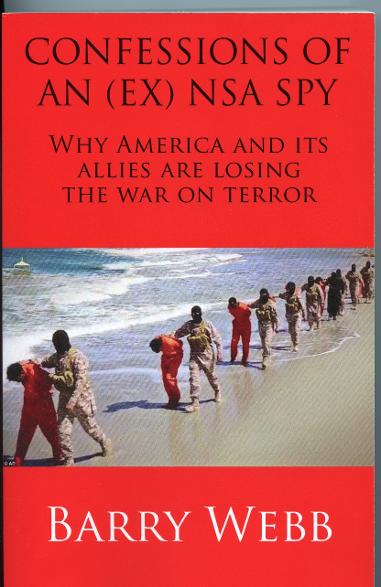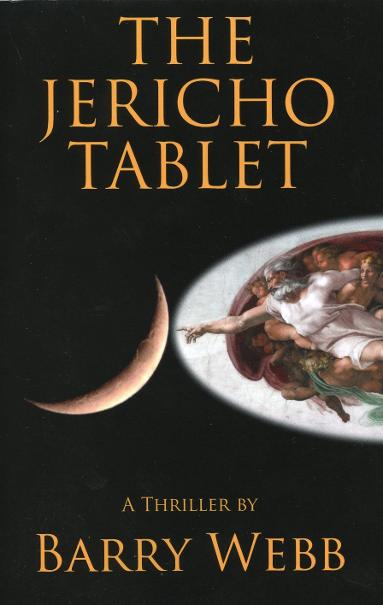WHERE DID YAHWEH COME FROM?
(posted on 14 May, 2011)
As noted in the trilogy The Last King of Babylon www.lastkingofbabylon.com the word Yahweh is a third person singular conjugation of the verb “to be.” A study of Biblical Hebrew linguistics reveals that it (the name “Yahweh”) was derived from the first person singular conjugation Ahweh, meaning “I am.” This first form appears in the Bible in Exodus 4:14 where God tells Moses that “I am that I am,” (The Hebrew is AHWEH ASHER AHWEH). Then God tells moses to: “say unto the children of Israel, I AM hath sent me unto you.”
So, how did this grammatical structure, this third person singular of the verb “to be,” become the Hebrew name of God?
WHAT THE BIBLE SAYS ABOUT YAHWEH
The Bible tells us that Yahweh was a son of El. In chapter 2 of Deuteronomy, God the most high (“El ‘Aliyon” in the Hebrew version) divided the nations into their inheritance giving Jacob’s descendants to the “Lord” (Yahweh in the Hebrew version). The translators of the King James version obviously tried to smooth that one over so as to disguise the polytheistic nature of early Israelite religion, but in the Hebrew version it is obvious that “Yahweh” (the “Lord”) is subservient to “El ‘Aliyon” (God the most high).
Some people have tried to use this passage to prove that Yahweh was originally a God of Ugarit where “El ‘Aliyon” (God the most high) was the chief deity over a large pantheon of Gods. However, all it really shows is that when believers of Yahweh merged with believers of El, subsequent religious literature was bound to show a great deal of cultural borrowing. That passage in Deuteronomy was only an attempt by later Biblical writers to explain how Yahweh became their chief God, instead of El whom their neighbors worshiped and whom the ancestors of some of them used to worship.
WHEN “ISRAEL” LEARNED ABOUT YAHWEH
The Bible also tells us that the children of “Israel” did not know of Yahweh prior to the Exodus (Exodus 6:2-3). “Moses” himself, if there was such a personage, did not learn of Yahweh until he visited his “father-in-law” in the land of the Midianites. “Moses” also supposedly got a personal one-on-one encounter with Yahweh on Mount “Sinai.” Traditionally Christians and post-diaspora Jews (under Christian influence) have placed all of this (i.e. the land of the Midianites, Mount Sinai, and the introduction of Yahweh as a deity) in what is now the “Sinai” Peninsula.
The problem is that no one ever placed these events in what we today call the Sinai until the 4th century A.D. when Roman Emperor Constantine’s mother Helena decided that a particular mountain in the deserts south of Judah/Palestine was Mount “Sinai” (and then she had a chapel built there to commemorate the site). So, from that time on that particular mountain was called Mount “Sinai,” and the peninsula in which it is located came to be called “Sinai.” And, then all of the events listed above, Moses meeting “Jethro” and his learning about Yahweh, etc., were thought to have taken place in that exceedingly desolate Peninsula.
PROBLEMS WITH THE MOSES IN “SINAI” THEORY
There are a whole host of problems connected with that idea. First of all when “Moses” fled Egypt (assuming that he was wanted for killing a man) the last place in the world where he would try to hide out would the “Sinai” Peninsula where the Egyptians had numerous mines and large numbers of military forces stationed to protect those mines and to guard Egypt’s eastern frontiers. No, he would have fled much further afield, to an area where the Egyptians had no military presence or influence.
Secondly, the name “Jethro” tells us a lot about the location of the place Moses fled to. “Jethro” is a corruption of the Hebrew YATRO coming from the stem "YOD TAW ROSH" the meaning of which is “Abundance,” and “excess.” Protagonists and antagonists in Biblical mythologies generally carry names descriptive of the function they played in life, or in the particular Biblical story that they are featured in. So, the “father-in-law” of “Moses” was a “man of abundance” who perhaps had an excess of wealth and/or flocks, hence the name YATRO. Now, it would be pretty hard to be a man of abundance and have excess wealth and flocks in a place like the “Sinai” Peninsula. However, it would not be so difficult to be a man of abundance if one lived much further east, namely the plains of northern Arabia.
“JETHRO’S” LAND OF ABUNDANCE
In fact, that is what the “Land of the Midianites” actually refers to. “Midianites” is derived from the Arabic MIDAN meaning “plains” which describes the geography of northern Arabia from Tayma through Adammatu (Biblical Dumah), Sakkaka, and ‘Ar’ar. This area is sitting on top of a huge aquifer which supplies the wells that have fed the above-mentioned cities for thousands of years. Also, spring rains cause the entire region to burst into a riot of colors as flowers seem to spring up out of nowhere to blanket the countryside from one end to the other (even today). The bottom line is that northern Arabia would have supplied the right environment for someone like “Jethro” to become “Mr. Abundance,” and would have been an ideal place for someone like “Moses” to have fled to since the Egyptians had no control or influence there.
Interestingly there are a number of 8th century B.C. inscriptions that Identify the city of Tayma as a cult center of Yahweh (see Meshel, Ze’ev, on www.fas.harvard.edu 2007, and Smith, Mark, The Early History of God, 2002, p. 32).
WHAT THE BIBLE SAYS ABOUT GOD’S ORIGIN
The coup de grace is that the Bible itself, in several places, comes right out and says that Yahwah came from Tayma and/or Sinai was in Arabia. For example Habakuk 3:1-3 says that “God” came from Tayma. Note that the author who composed Habakuk writing in the post-exilic period many centuries after Yahweh and El (Elohim) had been merged into a single deity would not have known the difference between Yahweh and El, and in fact used both terms interchangeably in this reference. Therefore, he is saying that Yahweh came from Tayma. Galatians 4:24-25 says that Mount Sinai is in Arabia. Deuteronomy says “. . . the Lord came from Sinai, and rose up from Se’ir unto them; He shined forth from mount Paran” (Deut. 33:2). And, then in Judges we have “Lord, when thou wentest out of Se’ir, when thou marchedst out of Edom, the earth trembled . . . .” (Judg. 5:4). Even though the place names of Edom and Sinai are usually not thought of as being in Arabia, many scholars do equate those sites, as well as Se’ir, with Tayma and areas of NW Arabia east of the Red Sea—at least in this particular context (Smith, Mark, The Origins of Biblical Monotheism, 2001, p. 245).
In this context it is interesting to note that Nabu Na’id, the last king of Babylon, thought of Edom as extending from Tayma to the Jordan River area as noted in the trilogy The Last King of Babylon. www.lastkingofbabylon.com The Biblical prophet Ezekiel implies the same geographic range for Edom as extending from Tayma up to Judah (Ezekiel 25:13).
WHY DID “GOD” COME FROM TAYMA?
This obviously raises the question as to why Tayma? Why does the Bible say that God came from Tayma? Why was there such a strong Yahweh cult in Tayma as early as the 8th century B.C. (and probably much earlier)? To answer those questions we have to delve into the very nature of Yahweh—at least as viewed from the standpoint of early man.
Imagine that you are lying under the desert sky some nine or ten thousand years ago adoring the beauty of the night sky. You have gotten rather skilled at locating some of the major galaxies such as the great hunter, the twins, and the bull, etc. Then suddenly a star appears out of nowhere directly over head. It streaks across the sky almost faster than your eye can follow leaving a trail of sparks in its wake. In the distant western horizon it crashes to the earth with a roar and a blast that makes the ground tremble. Would you not be inclined to think that it was some sort of “god” coming to earth from the mysterious sky above? What if you were close enough to the falling meteor to actually see where it landed? What if after you overcame your fear you entered its crater and tried to touch it—only to burn your hand? (The effects of entering the Earth’s atmosphere at high speed still lingering).
THE HOUSE OF “GOD”
Objects such as these came to be called “Bayt El(h),” meaning “house of God” by the early Semites because they believed that deity resided inside such objects. This concept was eventually extended to any large rock of unusual shape or size. Often times these objects were worshipped or prayed to, and smaller replicas were often kept in personal homes and tents along with one’s household gods. Modern non-Semitic speaking archaeologists mistakenly called these items, large or small, “beytles.” (As a mispronunciation of “Bayt El”). Of course, the most famous “Bayt El” in modern times is the one housed inside the Kaaba at Mecca. This object, believed by western scholars to have been a meteor, had been venerated by the inhabitants of the Arabian Peninsula (or at least those who lived in the western part of it) for thousands of years prior to the advent of Islam.
The concept of meteors and large rocks being “Bayt El” or “house of God,” was well entrenched among the descendants of the “Israelite/Jewish” tribes who wrote the Bible. In Isaiah 44:8 where he relates the story about the mythical “Jacob” having a chit chat with God, Yahweh says “is there any other God besides me?” And then answers his own question: “There is no (other) rock that I know of.” The King James version of the Bible translates the word SWR as God making the final sentence read “there is no (other) God that I know of.” However, the actual meaning of SWR is “large rock,” “cliff,” or “high citadel.” So, in other words (in the original Hebrew) Yahweh is saying that there is no other “rock” besides himself. The Yahweh (or Eloh/Alah since the terms are used interchangeably in Isaiah) as “rock” imagery also permeates Deuteronomy 32. These passages show that the connection between divinity and large/unusual/prominent rocks and citadel-like mountains remained hard-wired in the Israelite/Jewish mind-set at least through the post-exilic times when most of the Old Testament passages were written (or re-written as the case may be).
But Mecca is not the only place in Arabia that can lay claim to a distinct “Bayt El.” A few miles to the south of Tayma there is a huge sandstone outcropping that sticks up out of the flat desert plain like an angry fist smiting the sky. Could this be the mountain of God that “Moses” visited? The Bible tells us that Yatr/Jethro was a priest of the Midianites, and Arabic tradition equates him with the Midianite prophet Shu’aib (Asad, Muhammad, The Message of the Qur’an, 2003, p. 246, and Qur’an 11:83).
NON-BIBLICAL EVIDENCE FOR “YAHWEH.”
The first solid non-Biblical reference to a deity called “Yahweh” appears in Egyptian texts of the 13th Century B.C. that place him among the Shasu-Bedu of southern Transjordan (Devers, William G., “Who Were the Early Israelites and Where did They Come From,” 2003, p. 128). What is significant about this is that southern Transjordon corresponds to the territory of Edom which according to both Biblical and Babylonian sources extends down the Wadi Sirhan to Adammatu and even as far south as Tayma. So, the Shasu-Bedu, whether or not they themselves originally came from Tayma per se, may well have been influenced by Yahweh cults from that area.
Whether or not there ever was a real “Moses,” it does seem pretty clear from the above that Yahweh (or, more properly, the belief in Yahweh as God) did come from the Tayma area and there is no other sight, or object, anywhere near Tayma that could elicit such a feeling of religious awe and reverence for deity than that angry fist that rises up out of the desert plain just to the south of Tayma. For more on this sacred mountain, and for a possible origin of the name “Yahweh,” please read the trilogy of The Last King of Babylon. www.lastkingofbabylon.com

What are the long-term, overarching historical laws and trends that tell us the West is doomed?
Why is "Climate Change" not a national security issue, but the hysteria over it is?
What intelligence failures, if any, led to 9/11, the Boston Marathon bombing, San Bernadino, and other terrorist acts on our soil?
Why did we turn Iraq over to the Iranians?
Why did we go into Iraq in the first place?
Did we create ISIS? If so, Why?
Why do virtually all Middle Easterners across the board think that the U.S. is a major sponsor of terrorism?
Is Islam truly a "religion of peace?"
Why does Washington exert such Herculean bipartisan efforts to misunderstand these issues?
What are the Islamic prophecies driving recruitment for groups like ISIS and al-Qaeda?
Why driving ISIS from the battlefields of the Middle East will not be the end of the war on terror, no matter what our government says.
All of these issues and much more are discussed in this, the only counter-terrorism book on the planet that pulls it all together and connects all the dots.

Faced with cratering poll numbers, a U.S. president agrees to a plot having Islamic radicals kidnap an ambassador so he can "negotiate" his release in turn for the "Blind Shaykh," currently in prison for the 1993 World Trade Center bombing. The president hopes that the Blind Shaykh's return to Egypt will strengthen the hand of the Muslim Brotherhood to corral Islam's more radical terrorist groups and unite all Sunni Muslims with Turkey in a resurrected Ottoman Empire aimed at keeping the Russian bear caged. But when the kidnap operation falls apart and four Americans are killed at the U.S. consulate in Aleppo, the administration goes into full cover-up mode. Only undercover agent Matt Nolan knows the full truth of what happened in Aleppo--placing him number one on the Administration's enemies list. As Russia threatens war over the Ottoman Empire plot, Matt has to dodge numerous assassination attempts in his desperate effort to return to the U.S. to testify before Congress, put a stop to the Ottoman Empire plot, and defuse WWIII.
For more information please visit the book's website at: www.thealeppofile.com
The Glossy trade paperback version is available at: www.amazon.com
Kindle and Nook versions are also available.
NOW ALSO AVAILABLE:

What if an ancient table was discovered that undermined the foundations of both Christianity and Islam while giving instructions for re-awakening an older god, a god who exacts frightful revenge while promising a utopia of eternal life, peace, and vast knowledge—in return for absolute devotion and loss of free will?
What if that “god” was an artifact buried just under the surface of the moon supposedly by an ancient space-faring race? What if the president of the United States had a Messiah complex and staged his own “assassination” and “resurrection” three days later in order to become the “son” of that new/old “god” on the moon?
Matt Nolan and his colleagues in the U.S. Intelligence Services have only a limited amount of time to uncover the secrets of the resurrected artifact and find a means for destroying it and corralling the president—before they themselves are destroyed.
Is it the rapture that Evangelicals have been praying for?
Is it the new heaven and the new earth prophesied in both the Bible and the Qur’an?
Or, is it the anti-Christ? The Beast of Revelations? The great blaspheme? The abomination that maketh desolate?
Or, is it something else even more sinister?
THE JERICHO TABLET serves up a captivating mixture of ancient Near Eastern history, religion, and linguistics to go along with its modern day spy craft, political intrigue and corruption, media collusion, and science—while entertaining the reader with a fast-paced plot.
For more information, please visit the book's website at: www.thejerichotablet.com
To purchase, please click on: www.amazon.com / Books / The Jericho Tablet